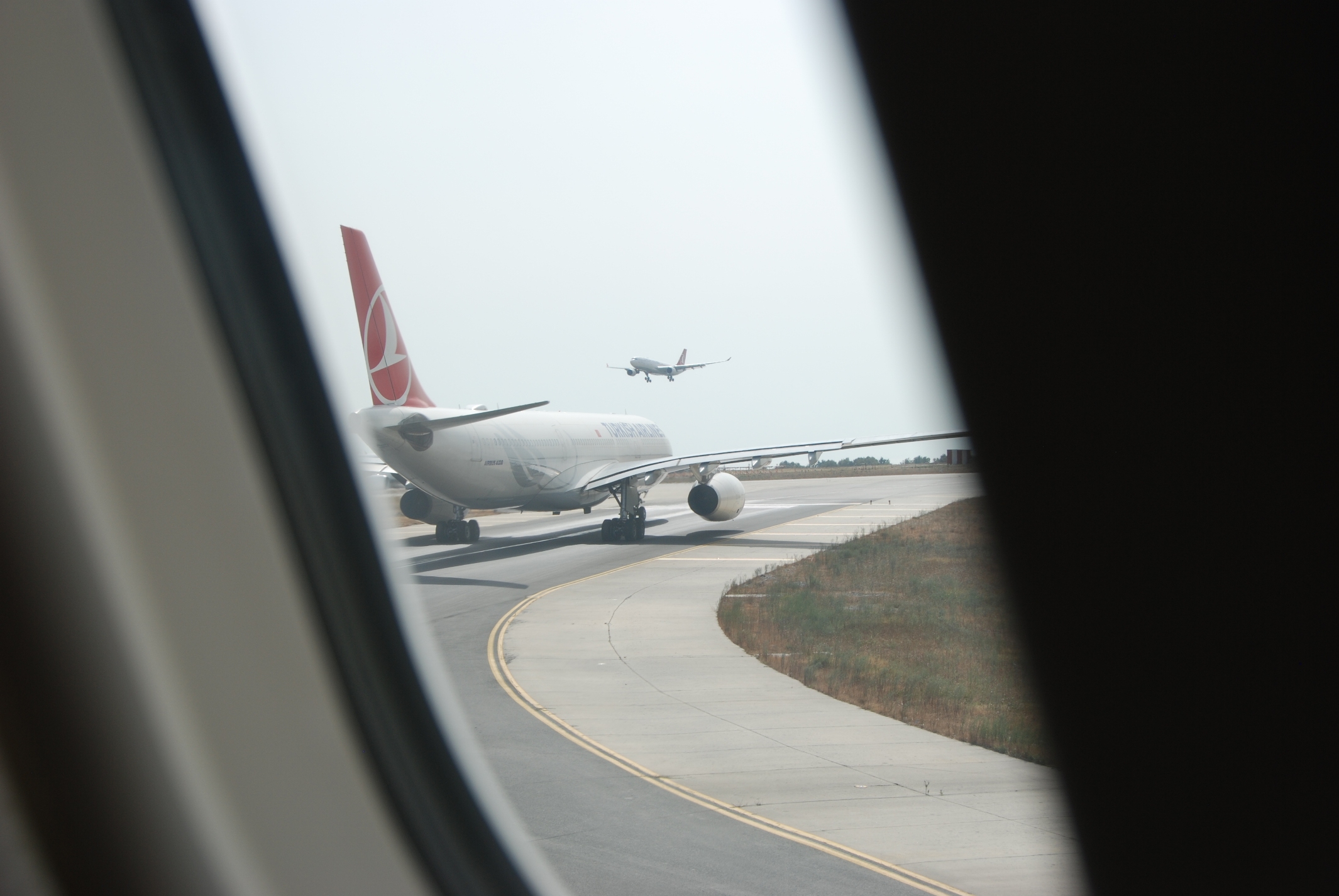by Captain Joe
What does Taxi and Line up mean for an aircraft?
What is the difference between “taxi” and “line up”?
They are two separate things, that´s for sure.
So let´s imagine you have just fastened your seat belts and you can feel the aircraft being pushed back out of it´s gate position. The engine spoul up and a few minutes later the aircraft starts to move under it´s own power.
The pilots standby for the clear signal by the push-back driver and then request a taxi clearance with ground or apron controller, which will sound similar to this.”……” After receiving the taxi clearance the pilots turn on the taxi and runway turnoff lights, release the parking brake and taxi along their assigned route.
Very often you can feel the aircraft slowing down just after it started moving, that indicates a brake check, then you might see the ailerons going up and down, that is the flight control check. On smaller Turboprop jets you sometimes see that only one propeller is spinning, so the pilots are using the single engine taxi procedure. But all these procedures can vary from airline to airline.
Also entering the deicing pad and getting deiced is within the taxi phase.
Sometimes you have to give way for incoming or outgoing traffic, or stop at an active runway which you have to cross in order to get to your holding point. At big airports like Madrid or Los Angeles you might have to change the ground frequency up to four times and taxi times can vary between three minutes and 1 hour or even longer.
To steer the aircraft you either use the tiller or the pedals once the speed is high enough, and the maximum taxi speed is 30 knots, approximately 60km/h and going around a turn should be performed at speeds not higher then 10 knots to prevent the nose wheel from collapse.
So once you have reached your holding point at your assigned runway, the ground controller will advise you, once your leaving his perimeter, to switch over to tower control.
The tower controller is in charge of overlooking the approach and departure sector and to give line up, take-off and landing clearances.
The taxi phase ends once the tower controller has cleared you onto to the active runway.
Before lining up, the tower controller will mostly likely ask you if you are “ready for the departure”. Once you have completed the “Before Take-Off Checklist” you will respond, “AirJoe123, ready for departure”,”AirJoe123 line up runway 26Right”. Once lined up, he will say,”AirJoe123, cleared for take-off runway 26 right”.
So the line up starts once you´ve passed the holing point and ends once your airplane fuselage is in line with the runway centerline. You should be fully ready for departure cause if there is inbound traffic you do not want to line up on the runway if you´re not fully ready, possibly causing the inbound traffic to perform a go-around. No you do not want that to happen, trust me!
Line ups can also be performed via runway intersections, and even if there is a airplane waiting at the beginning of the runway.
There are special line up procedures, in Düsseldorf/Germany for example, a Airbus A330 or Boeing 777 will line up in the opposite direction, perform a 180 degree turn to use the full available runway length in case of a heavy take-off weight. Special line up guide lines will help the pilot to perform this procedure.
Also there are special line up clearances, for example if you have inbound traffic on short final, like in this video, the tower controller will say “AirJoe123, BEHIND next landing Airbus A321, line up runway 26Right BEHIND”. When reading back your clearance, the controller will take extra care that you mention the word “BEHIND” twice.
So those are the main differences of taxi and line up. Taxi is getting to the runway and line up is entering the runway and being ready for take-off.


Comments
One response to “What does Taxi and Line up mean for an aircraft?”